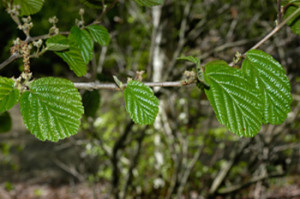Researchers in Nigeria are reported to have identified about 143 local plants and vegetables useful for a curative treatment of haemorrhoids. These edible vegetation, some of which are readily identifiable for local soups, are recommended for consumption in a special diet slightly cooked for treatment.
Reports have it that the researchers are from the Department of Plant Science and Applied Zoology, Olabisi Onabanjo University, Ago-Iwoye, Ogun State.
The research results recently published in the Nigeria Scholars Research Library Annals of Biological Research show that the herbal recipes include green spinach, Amaranthus viridis (Amaranth, Tete in Yoruba, akwukwo nri in Ibo), Celosia spp (Lagos spinach, Soko in Yoruba), and waterleaf (Talinum triangulare). The use of Occimum gratissimum (scent leaf, Nchuanwu in Ibo, Effirin in Yoruba) as species in some soup is also very effective in the treatment of piles.
Others include Senna alata (Asunrun oyinbo in Yoruba, Ogalu in Ibo), Gongronena latifolium (Utazi in Ibo and Arokeke in Yoruba), Axonopus compressus (carpet grass), Anogeiessus leiocarpus (chew-stick, atara in Ibo, ayin in Yoruba and farin gamji in Hausa), Pteleopsis suberosa (wuyan giíwaá in Hausa), Tetrapleura tetraptera (Osakirisa or Oshosho in Ibo, Aidan in Yoruba), Khaya senegalensis (mahogany) and Allium spp (garlic, onion, shallots).
The study titled, “Ethnobotanical Survey of Plants Used in the Treatment of Haemorrhoids in South-Western Nigeria” was published by Mike O. Soladoye, Michael O. Adetayo, Emmanuel C. Chukwuma and Amusa N Adetunji.
Haemorrhoids, also called pile, are vascular structures in the anal canal which help with stool control. They become pathological or piles when swollen or inflamed.
They are caused by increased pressure in the veins of the rectum or anus resulting from straining when trying to have a bowel movement or any activity causing straining, such as heavy lifting. As pressure increases, blood pools in the veins, increases and this causes them to swell thus stretching the surrounding tissue.
Haemorrhoids can be inside and/or outside the anus and they are not dangerous. Internal haemorrhoids may be located near the beginning of the anal canal or close to the anal opening. When it protrudes outside the anal opening, they are referred to as prolapsed haemorrhoids.
It is estimated that about one quarter of all Africans have had haemorrhoids at age 50 and that 50 to 85 per cent of the world population, could be affected at some time in their life.
Pile affect both sexes but the impact on males appear to be more of concern because of its effect on their sexual performance. This disease appears to be genetically inherited as some children suffer this ailment. Humans are prone to haemorrhoids because the erect posture of man puts a lot of pressure on the veins in the anal region.
According to recent studies, overeating and presence of unassimilated bulk foods are also known to cause haemorrhoids as well as intoxicating liquors, artificial flavoring or spices, white bread, cakes, all other white flour products, fried foods, sugar and all mineral drinks.
Results from the study as released on the researchers from the Olabisi Onabanjo university state:
“In all, the commonest species in the recipes are Senna alata, Gongronena latifolium, Axonopus compressus, Anogeiessus leiocarpus, Pteleiopsis suberosa, Tetrapleura tetraptera, Khaya spp and Allium spp. All the plants identified in this work have been used severally by the herbalists and adjudged to be efficacious.”
The researchers noted during the interviews that if internal haemorrhoids is not treated, it could lead to external haemorrhoids. This disease can be treated with both fresh and dry herbs.
They wrote: “Scientific studies on these plants too would yield interesting results and help us in understanding the pharmacological actions of the active compounds found in these plants as suggested by Ramana.
“As clearly stated by Pei traditional medical knowledge of medicinal plants and their uses by indigenous cultures are not only useful for conservation of cultural traditions and biodiversity but also for community healthcare and drug development in the present and future.
“From the opinions of the 25 respondents that were interviewed, 52 per cent suggested that herbal tea is the most effective option in treating haemorrhoids, 16 per cent said herb powder (Yoruba -Agunmu), eight per cent confirmed rubbing concoction while 12 per cent confirmed that herbal paste/lotion are more effective. Only eight per cent suggested herbal juice and the remaining eight per cent herbal gins.










